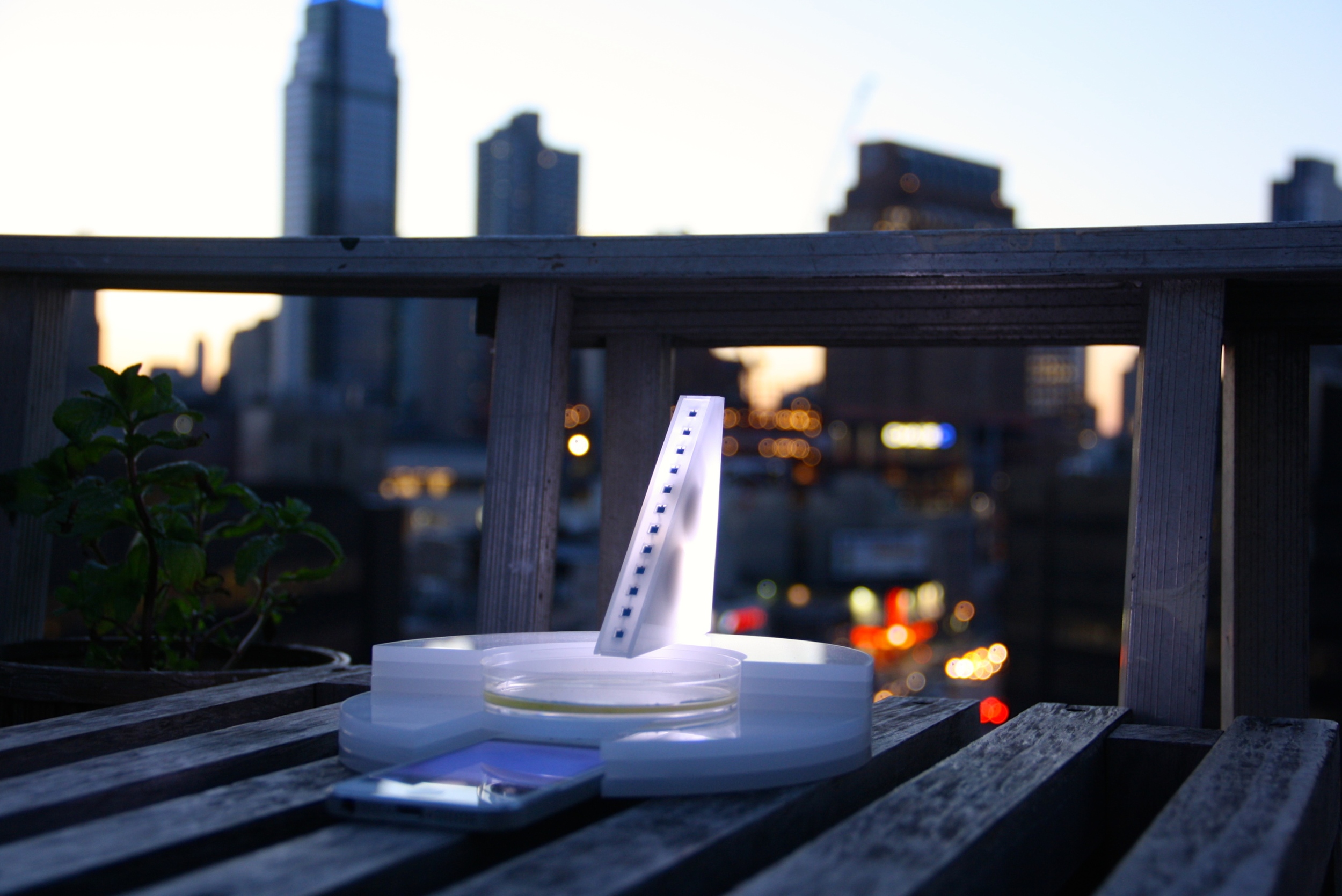POWERS OF: DURATION | BIOTECH & PRODUCT DESIGN | NEW YORK | 2015
"Powers of / Series" is a multifaceted research project that delves into the intersection of philosophy, science, and art to explore the interconnectedness of all life forms and the evolving relationship between biology and technology. The project seeks to broaden perspectives on sustainability and empathy towards other life forms, challenging anthropocentric concepts and embracing biological realities.
The first iteration, "V.01 DURATION," presents a pseudo-utilitarian object that merges chemical, electrical, and natural elements. It features Euglena, a single-celled organism capable of following light, integrated into a sundial-like design. During the day, the object interacts with sunlight, creating visible patterns of Euglena conglomerations. At night, miniature solar cells power the object, illuminating it softly and maintaining the Euglena's well-being. Through meticulous lab experiments and technological innovations, the project exemplifies the symbiotic relationship between nature and technology, inviting viewers to contemplate the intricate dynamics of living systems.
CAD Diagram
The Euglena function as both animals and plants, they eat food and go through photosynthesis depending on the conditions they are in. Much of the Earth’s outer geological formations are due to cyanobacteria such as Euglena, and it is interesting to contemplate the range in which these bacteria have been influential to our existence. We are talking about scale, which is an important factor for designers to get familiar with as we will increasingly deal with organic and living materials. As before the cyanobacteria where responsible for a majority of the Earth’s formation, in modern times humans have taken over that task. This juxtaposition is communicated through the use of the sundial as a representation of the solar system as a chosen time factor, in conjunction with the Euglena escaping this light - rejecting this notion. As the Euglena have their own perception of time which is highlighted by the environment designed for them in the object, we are encouraged to have empathy for a different life form, a different scale.
In order to test the hypothesis of the Euglena visually moving in our specific context, I had to conduct a series of lab experiments. It is clear that Euglena follows light, but this varies a lot depending on external conditions. They thrive in temperatures between 18-22 degrees Celsius, and their time cycle varies a lot. They precisely gate gene expression and metabolic activities over a 24-hour period, however their cell cycle ranges vastly from ten hours to ten years depending on the specific species. Following a protocol, we where able to test in which light and under which conditions they would move. Euglena has the ability to travel very fast; relatively they are able to swim as fast as a jet plane.
The 12 miniature solar cells grab the energy from the sun and store it into lithium ion rechargeable batteries to use it during nighttime. The circuit enables the powering of the light feature and therefor lights up softly during the night to keep the Euglena happy and well. Nature and technology are in osmosis and live in this spatiotemporal piece, putting forward notions of time-space relativity by creating a self- sustainable timepiece. The technical aspects where designed to be subtle, shining through the translucent Plexiglass they evidently demonstrate their purpose without distraction. The circuits all needed to be as small as possible and neatly arranged as they are part of the aesthetic, communicating the ways in which the Euglena live in symbiosis with technology in this particular piece. Through our experiments, we where able to collect around 0.1 volts/hour of direct sunlight. However, this number would fluctuate quite dramatically depending on the specific conditions. The circuit was prototyped on a breadboard with a bigger solar panel, and then transferred to the miniature solar panels. The decision to put them on the axis of the sundial was both practical as well as aesthetic, accentuating the sun as a source of energy.
Credits:
Lab: Genspace Brooklyn
Collaborator: Fabiola Einhorn








